Jet Combustion CFD Simulation by ANSYS Fluent
$140.00 Student Discount
- The problem numerically simulates the Combustion Jet inside a chamber using ANSYS Fluent software.
- We design the 2-D model by the Design Modeler software.
- We Mesh the model by ANSYS Meshing software.
- The mesh type is Structured, and the element number equals 9,928.
- We use the Species Transport model to define the combustion process.
To Order Your Project or benefit from a CFD consultation, contact our experts via email ([email protected]), online support tab, or WhatsApp at +44 7443 197273.
There are some Free Products to check our service quality.
If you want the training video in another language instead of English, ask it via [email protected] after you buy the product.
Description
Combustion Jet CFD Simulation, ANSYS Fluent Training
Description
This tutorial has a cylindrical domain in which air enters at a 1m/s velocity. At the same time, ethylene(C2H4) by three jets and a high velocity of 40m/s penetrates the solution domain, mixes with the air, and combustion occurs using the eddy-dissipation model. Top and bottom inlets enter with a 30o degree related to the horizontal line, and their flows hit the middle inlet.
The geometry of the solution is a 2D rectangular domain whose length in the X and Y directions is 1.5m and 0.5m, respectively. Side inlets are 234mm away from the centerline of the geometry. Note that, Design Modeler software is used to create the geometry of the solution. In addition, ANSYS Meshing software is used for generating 9,928 Structured mesh grids.
This CFD project is the 13th episode of the ANSYS Fluent General Training Course
Methodology: Combustion Jet CFD Simulation
The simulation is Steady and the Pressure-based solver type is used due to the incompressibility of the working fluid. The gravitational acceleration effects are neglected. The Volumetric Reaction of the Species Transport model is used to define combustion.
Conclusion
At the end of the solution process, two-dimensional contours of pressure, velocity, temperature, and volume fractions of all materials consisted in the solution are achieved. Mass fractions of pollutants are also obtained. The side inlets’ ethylene flow moves to the domain’s centerline.
It hits the center flow so that the mixture of O2 from the air inlet mixes with the ethylene. The combustion occurs and the temperature reaches a high value. The Mass-Weighted Average of Static Temperature at the outlet surface is 1113.0554.
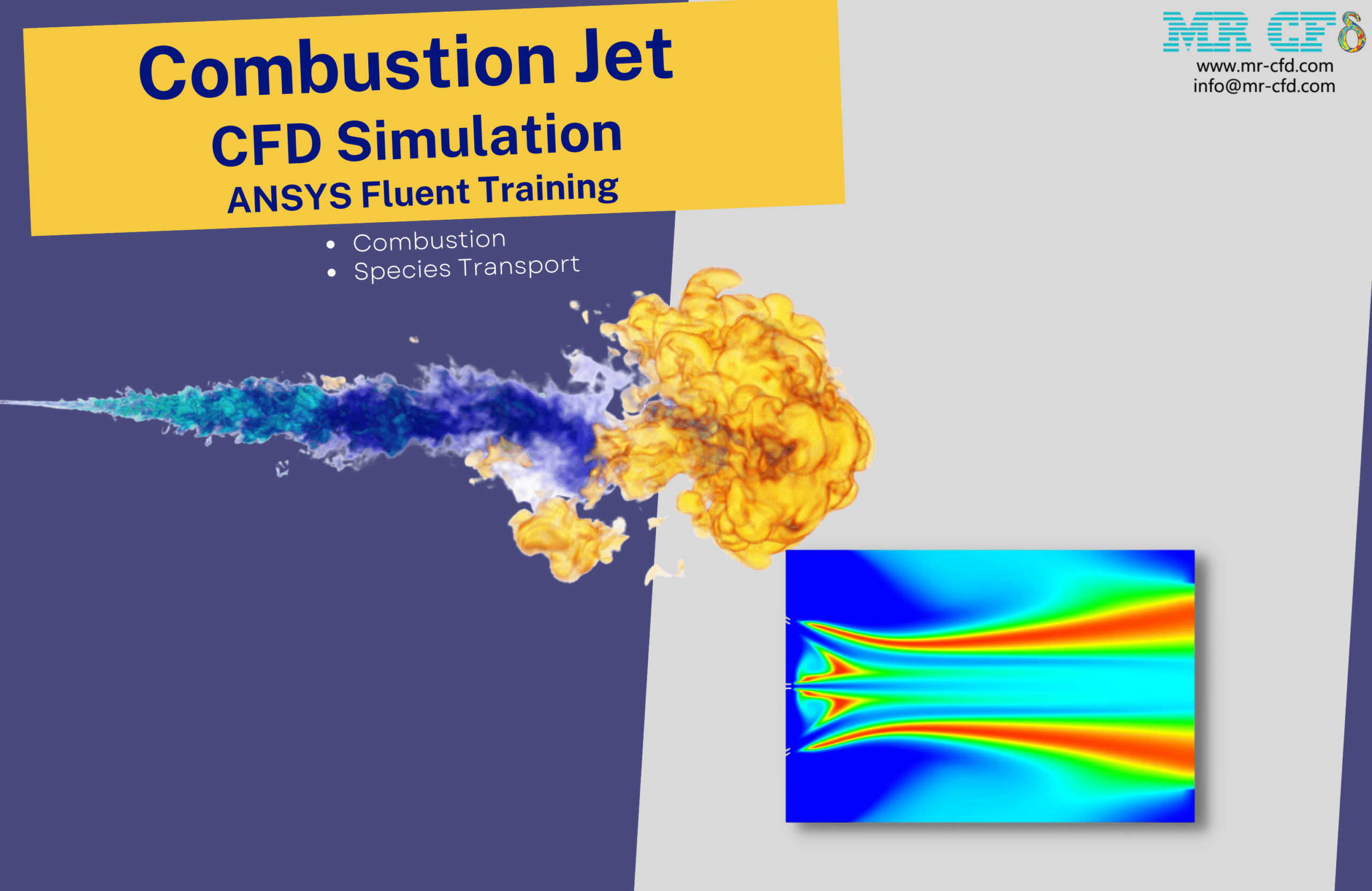
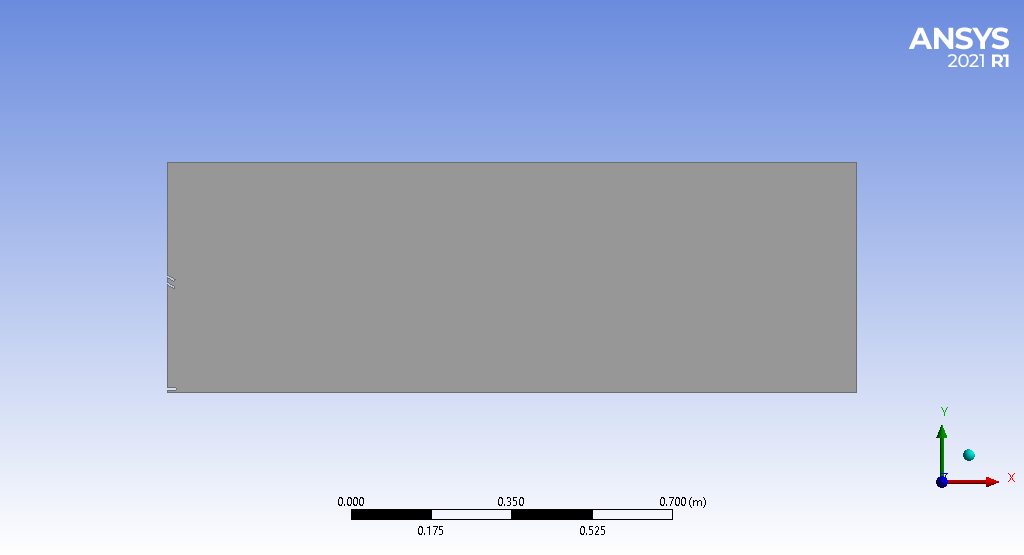
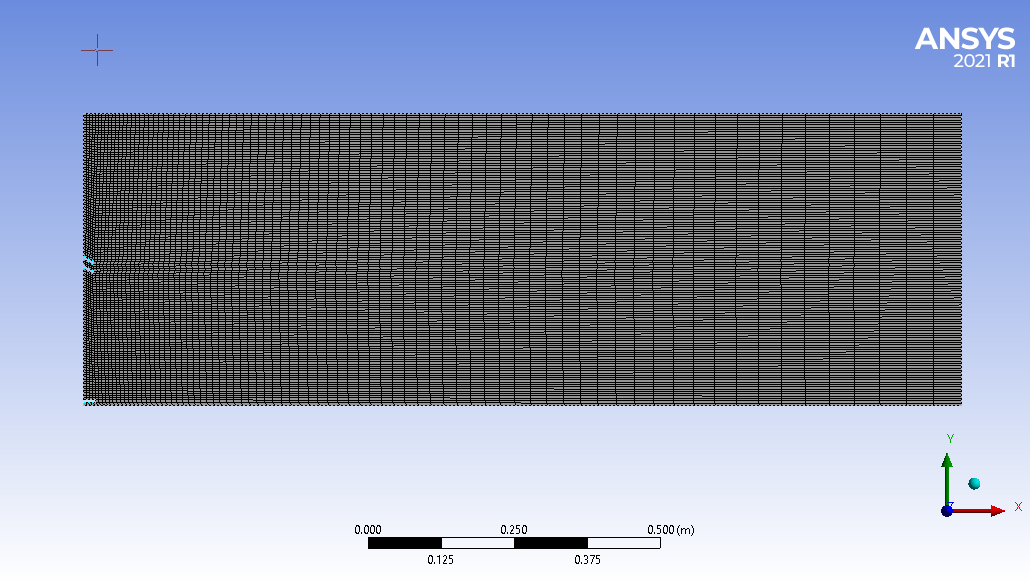

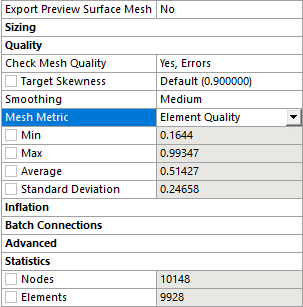
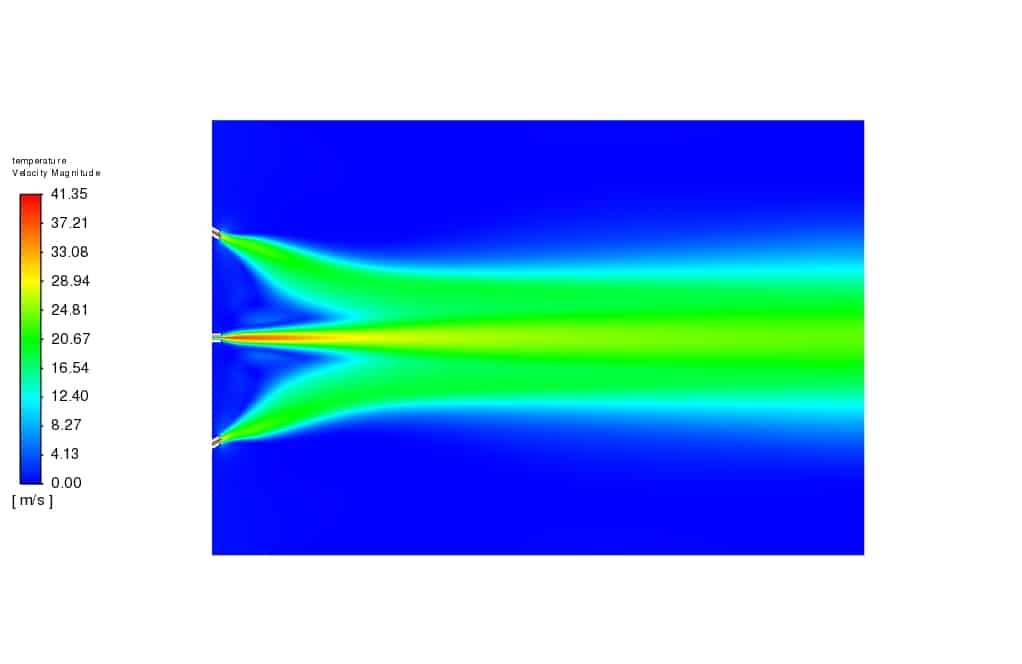
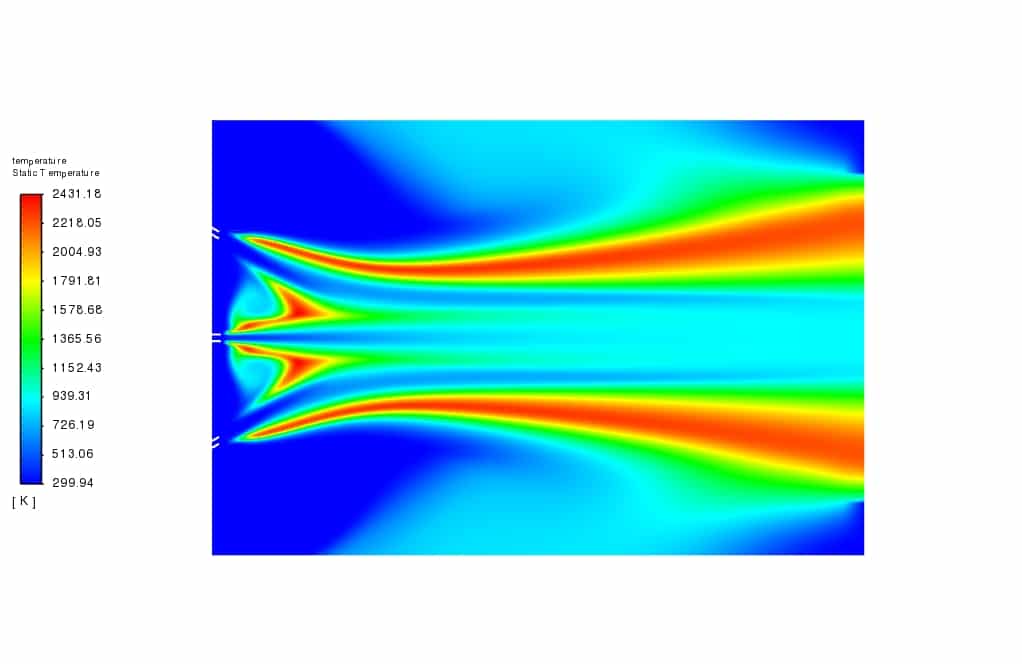
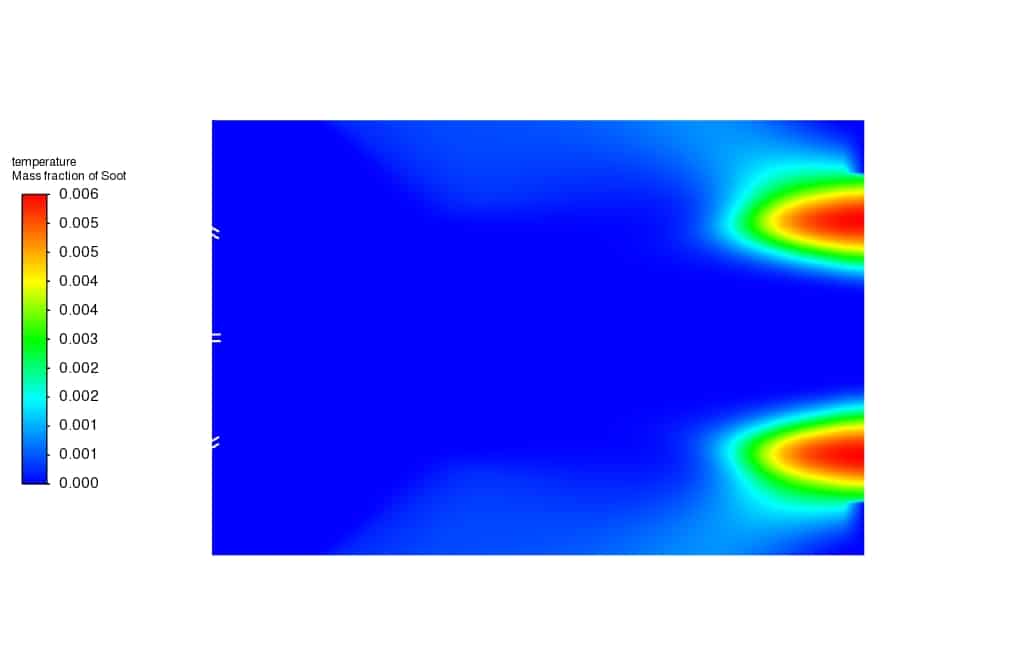
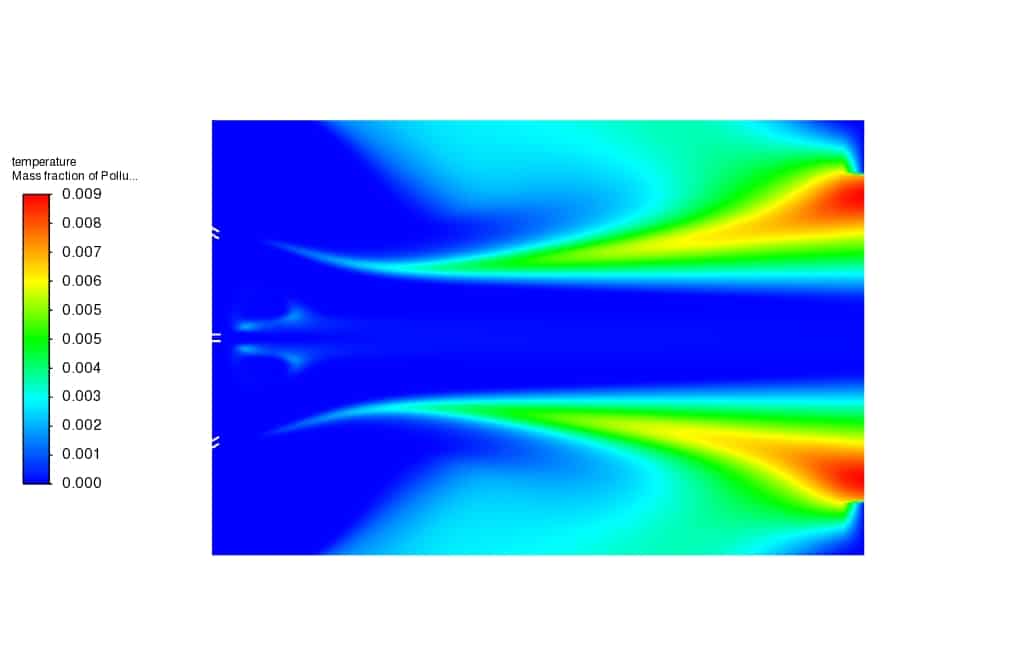


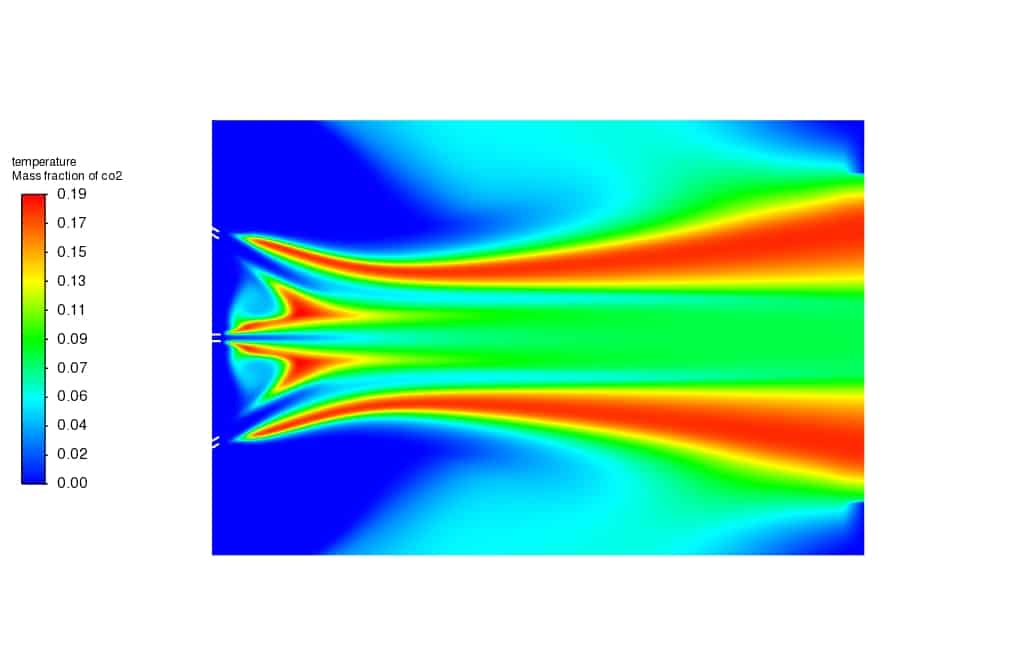
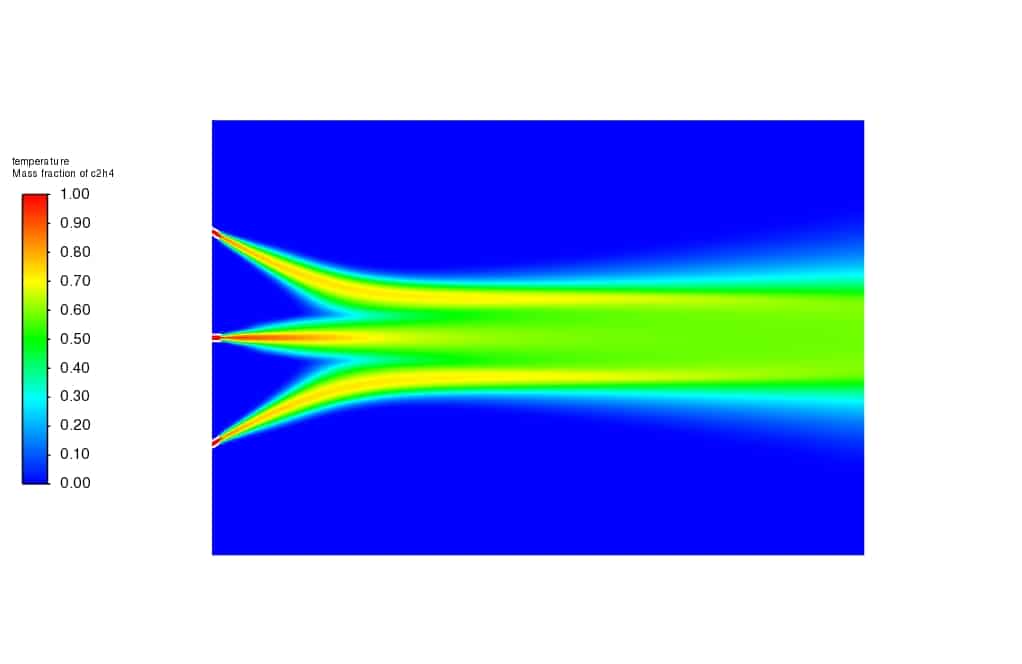



Neha Hill –
The tutorial was super informative and the step-by-step methodology was very clear. Seeing the combustion process in such detailed simulations helps grasp the underlying physics and improve practical skills.
MR CFD Support –
Thank you for your positive feedback! We are thrilled to hear you found the tutorial informative and clear. It is always our goal to provide comprehensive education that makes complex processes easy to understand. Your experiences help us ensure that we are on the right track. Keep burning bright with knowledge!
Russ Will –
What effects do the inlets’ orientation and high ethylene velocity have on the combustion process in the domain?
MR CFD Support –
The orientation of the inlets and the high velocity of ethylene significantly impact the overall flow dynamics and combustion efficiency. The inlets being positioned at a 30-degree angle relative to the horizontal encourages mixing as the flows collide, enhancing the mixing of the air with the ethylene which is crucial for effective combustion. The high velocity of ethylene assists in increasing the momentum, further promoting rapid mixing and the introduction of reactants. These conditions facilitate a more comprehensive reaction zone and can lead to higher combustion temperatures and altered distributions of species and pollutants in the domain.
Luis McKenzie –
Just wanted to say thank you for this insightful tutorial on jet combustion. The clarity in explaining the setup and the simulation process really helped me grasp the concept of how combustion modeling works in ANSYS Fluent.
MR CFD Support –
We’re so glad to hear that you found the tutorial on jet combustion helpful and informative! Thank you for taking the time to leave a review. Please don’t hesitate to reach out if you have any more questions or if there’s another area you’d like to explore.
Regan Hegmann –
The tutorial sounds comprehensive. Were heat loss and the radiation effect considered in this combustion simulation?
MR CFD Support –
Thank you for your compliment and interest! This particular simulation study focuses on the jet combustion process using the eddy-dissipation model. The information provided does not specifically mention if heat loss and radiation effects are considered. For a full understanding of these aspects within the simulation, I recommend reviewing the detailed setup in the tutorial documentation or reaching out to MR CFD’s support if you require further information.
Lonzo Pfeffer –
I was wondering after Jet Combustion tutorial if there’s a technique recommended in situations to prevent backflow when combustion is involved?
MR CFD Support –
In CFD simulations with combustion, to prevent backflow at the outlet boundaries, it is generally recommended to use pressure outlet boundary conditions that specify a backflow temperature and species composition. Additionally, a sufficiently developed outlet length can help stabilize the flow and reduce the potential for backflow. Keeping the outlet pressure lower than the inlet pressure is crucial.
Rhea Gutmann II –
The tutorial was really clear on setting up such a complex combustion simulation. The multicomponent approach using the eddy-dissipation model for jet interaction was particularly insightful. Also, seeing the resulting temperature profile and the effect on pollutants’ mass fractions post-combustion gave a practical understanding of combustion dynamics.
MR CFD Support –
Thank you for your positive feedback on our Jet Combustion CFD Simulation tutorial! We’re delighted to hear that you found the materials clear and insightful, especially regarding the combustion dynamics using the eddy-dissipation model. We strive to offer thorough and practical learning experiences. Should you have any more questions or need further assistance on similar topics, feel free to reach out or explore our other learning products.
Nicholas Dickens –
The tutorial seemed comprehensive. Are there any additional validation steps to ensure the simulation results match experimental or theoretical expectations?
MR CFD Support –
We are pleased to hear that you found the tutorial comprehensive. Typically, simulation results are validated by comparing them with experimental data or theoretical predictions when available. In cases where experimental comparisons are not possible, ensuring grid-independence of the results, analyzing sensitivity to various modeling assumptions, and checking for conservation of mass and energy across the domain are common practices for validation.
Amina Goyette –
I am blown away by the clarity of the results portrayed in the contours from the Jet Combustion CFD Simulation tutorial! The temperature and velocity distributions were particularly helpful for my understanding of the combustion process.
MR CFD Support –
Thank you for your positive feedback! We’re thrilled to hear that our Jet Combustion CFD Simulation tutorial was beneficial for you, especially the temperature and velocity distribution contours. If you have any further questions or need more guidance, feel free to reach out.
Prof. Kamron Hintz PhD –
The results show the combustion process very well, and it’s impressive how the simulation captured the interaction between the ethylene and air. FLUENT’s handling of the eddy-dissipation model with the velocity and temperature contours provided deep insights into the combustion dynamics.
MR CFD Support –
Thank you for your positive feedback! We’re glad to know that the Jet Combustion CFD Simulation tutorial met your expectations and helped you gain a better understanding of combustion dynamics using ANSYS Fluent’s capabilities. It’s great to hear that the visuals and data were insightful. If you have any more questions or need further assistance with another project or concept, please let us know!
Isidro Kuhic III –
The tutorial for the Jet Combustion CFD Simulation was excellent and intuitive. The structured approach made following along straightforward, and the combustion model provided a realistic outcome. Seeing the high temperature values where combustion occurred was particularly impressive.
MR CFD Support –
Thank you for your positive feedback! We’re delighted to hear that you found the Jet Combustion CFD Simulation tutorial to be excellent and helpful. It’s great that the structure of our tutorial made it easy for you to follow and that the simulation results met your expectations. We’re here to provide further assistance if you ever need it. Thanks again for choosing our learning resources!
Franco Abbott –
I’ve completed the Jet Combustion simulation tutorial, and the results were quite insightful. The temperature contour perfectly captured the high temperatures in the combustion zone and the mixing effects were evident in the ethylene distribution. Great application of the eddy-dissipation model!
MR CFD Support –
Thank you for your positive feedback! We’re delighted to hear that our Jet Combustion CFD Simulation tutorial met your expectations and provided valuable insights. It’s fantastic to know that the temperature contours and mixing effects were clearly portrayed through the simulation. If you ever have any questions or need further assistance with our products, please don’t hesitate to reach out. Thanks again for choosing our training materials!
Nestor Watsica –
This tutorial was fantastic! The visuals for the jet combustion were clear and the simulation explanations made understanding the combustion process a breeze. Grateful to have lessons like this available.
MR CFD Support –
Thank you for your positive feedback! We’re thrilled to hear that our tutorial on jet combustion CFD simulation using ANSYS Fluent was helpful and that the visuals and explanations enhanced your learning experience. We’re committed to providing high-quality educational materials to aid in your understanding of complex processes like combustion. Thanks again for choosing our training!
Ms. Theresia Moore I –
I’m curious about the impact of the 30-degree angle for the top and bottom inlets on the overall efficiency of the combustion process. Can you elaborate on how this angle choice affects the simulation results?
MR CFD Support –
The 30-degree angle of the top and bottom inlets is important as it influences the mixing efficiency of the air with the fuel jets, which is a critical factor for efficient combustion. With the inlets oriented at this angle, the air streams are directed towards the central ethylene jet, promoting better mixing and consequently more effective combustion. If the angle enables a more uniform distribution of oxygen, it could lead to a more complete burn, higher temperatures, and reduced emissions of unburned hydrocarbons. This setup can also result in intricate patterns in flow, temperature, and species concentration fields, which are successfully captured in the results obtained from the simulation.
Dr. America Fahey –
I am impressed by the detail of this simulation! Was it difficult to achieve precise mixing between the ethylene and air to initiate proper combustion?
MR CFD Support –
Thank you for your positive feedback! In simulations like this, it can indeed be challenging to achieve the precise mixing needed for effective combustion. This is managed by carefully configuring the inlet velocities, angles, and species injection parameters to encourage thorough mixing within the domain. Several iterations and a proper understanding of the physics involved are generally needed to obtain accurate results. We’re glad you appreciated the complexity of the work!
Lisa Lemke –
Absolutely amazed by the level of detail in this CFD simulation tutorial! The clear step-by-step guidance made understanding the combustion process and setting up the simulation in ANSYS Fluent a breeze. I was particularly impressed by how the mixing and reaction of ethylene and air were presented, and the resulting combustion. Great work!
MR CFD Support –
Thank you for your positive feedback! We’re delighted to hear that the tutorial was helpful and that you appreciated the detailed process for setting up the jet combustion simulation in ANSYS Fluent. Your satisfaction with our product’s clear instructions and presentation is a wonderful compliment to our team’s efforts to provide high-quality educational content.
Ezequiel Mertz –
What great clarity this tutorial offers! I was impressed by how well the combustion process and the interaction of jets were demonstrated. It’s helped deepen my understanding of jet combustion simulation.
MR CFD Support –
We’re thrilled to hear that the Jet Combustion CFD Simulation tutorial was helpful to you and provided clear insights into the combustion process! Thank you for your positive feedback, and we look forward to supporting you in your continued learning journey.
Jamarcus Gibson II –
The thorough analysis and clear visuals in the Jet Combustion CFD simulation truly helped me understand the combustion process better. Insightful and well-presented!
MR CFD Support –
Thank you for sharing your positive experience with our Jet Combustion CFD simulation course! We’re thrilled to hear that our materials helped deepen your understanding of combustion processes.
Barbara Bashirian III –
I’m impressed with the level of detail this Jet Combustion CFD Simulation tutorial provides. The methodology sounds robust and the inclusion of pollutants’ mass fractions is especially important for environmental assessments.
MR CFD Support –
Thank you for your compliment on our Jet Combustion CFD Simulation tutorial. We strive to provide comprehensive and detailed instructions to facilitate a deep understanding of CFD processes for real-world applications. Your feedback is appreciated and motivates us to maintain high quality in our learning products!
Kristian Grady –
This product seems very comprehensive. The different angle inlets and combustion modeling ought to provide a great insight into the turbulent mixing process!
MR CFD Support –
Thank you for your positive feedback! We’re delighted to hear that you find the various aspects of the simulation, such as the angled inlets and the combustion modeling, to be informative and comprehensive for understanding the turbulent mixing process.
Prof. Berneice West –
Which parameters were considered to set the inlets’ angle at 30 degrees in relation to the horizontal line?
MR CFD Support –
AdminResponse
Ms. Treva O’Connell PhD –
Really impressed with the detail of the Jet Combustion CFD Simulation training guidance—I was able to apply the eddy-dissipation model accurately thanks to the clear instructions.
MR CFD Support –
Thanks so much for your feedback! We’re thrilled to hear our Jet Combustion CFD Simulation training was helpful to you. If there’s anything else you’re curious about or want to delve deeper into, feel free to reach out. Happy simulating!
Dameon Welch I –
The review is really informative and the project seems fascinating. I’d love to know if post-processing of the simulation includes analysis on heat release or other products formed during combustion?
MR CFD Support –
I’m glad to hear you find the project fascinating! Yes, during post-processing, the simulation data allows for the analysis of various parameters, including heat release due to combustion as well as species concentration to track the formation of combustion products. The contours of temperature, as mentioned, represent the distribution of heat through the solution domain, and concentration profiles of involved species provide insights on the result of the combustion process.
Mr. Casper Mann Sr. –
I’m impressed by the level of detail in the simulation and its application. What was the primary challenge in setting up the simulation to ensure accurate combustion modeling?
MR CFD Support –
Thank you for the positive feedback! The primary challenge in accurate combustion modeling is usually related to accurately mapping the physical and chemical processes involved in combustion. The correct implementation of the eddy-dissipation model to account for turbulent mixing and reaction rates is crucial. Ensuring that the mesh is sufficiently fine in areas of interest, like the combustion zone, to capture steep gradients in temperature and species concentrations is another significant aspect. We appreciate you recognizing the intricacies of the work involved!
Mae Abshire –
I found the insights on mixture and combustion dynamics fascinating. Great job in portraying the flow interactions and combustion efficacy with such detail, along with meshing strategies!
MR CFD Support –
Thank you so much for your encouraging review! We are thrilled to know that the CFD simulation details provided a clear understanding of the combustion process and interactions within the simulation environment.
Dereck Osinski –
I’m very impressed by how well the ethylene jet mixing and combustion have been simulated in using the eddy-dissipation model. The details in the methodology provide a solid understanding of the steps taken in the process. It was especially interesting to see the interaction of the flows from the side inlets and their impact on combustion.
MR CFD Support –
Thank you for your positive feedback on our Jet Combustion CFD Simulation tutorial! We’re thrilled to hear that the simulation details and use of the eddy-dissipation model have met your expectations. It’s our aim to provide comprehensive and easy-to-understand training materials. Your satisfaction with the learning process motivates us to continue delivering high-quality CFD resources.
Terry Haley –
I’m very impressed with how the CFD simulation captures the intricacies of jet combustion. It is fascinating to see the effects on temperature throughout the domain. Did the simulation results include the formation and concentration of any by-products of combustion, such as NOx or CO?
MR CFD Support –
Thank you for your kind words and your interest in our simulation details. While the primary focus of our simulation was tracking the combustion process of ethylene and the resultant temperature distribution, we typically would record data on by-products like NOx or CO if those were included in the reaction mechanism and relevant to the study objectives. That level of detail would provide a more complete picture of the combustion’s environmental impact.
Alessandra Glover –
I’m impressed with how well the simulation handled the complexity of the jet combustion process. The results seem very detailed!
MR CFD Support –
Thank you for your positive feedback! We’re thrilled to hear that you are satisfied with the level of detail and complexity captured in the Jet Combustion CFD Simulation by ANSYS Fluent. If you have further questions or need more information, feel free to reach out.
Buford Christiansen –
I’m thoroughly impressed by how the Jet Combustion CFD Simulation captures the details of combustion! The clarity of the results has been particularly helpful for understanding the combustion process. Great job on setting up and presenting this complex analysis!
MR CFD Support –
Thank you for your positive feedback! We’re delighted to hear that our Jet Combustion CFD Simulation product could aid in your understanding of combustion dynamics. If you have any more questions or need further assistance, please feel free to reach out.
Emelia Kovacek –
Fantastic tutorial! The methodology of handling combustion modeling with ethylene and air, especially involving the specific jet orientations at an angle, was enlightening. The well-explained step-by-step processes aided my understanding of combustion simulation, and the detail of obtaining mass fractions of pollutants will be super useful for my further studies on emissions.
MR CFD Support –
Thank you for your positive feedback on the Jet Combustion CFD Simulation tutorial! We’re delighted to hear that it was enlightening and helpful for your studies on emissions. It’s always our goal to ensure our products provide clear, educational, and actionable insights. If you have any further questions or require additional assistance with your simulations, feel free to reach out to us. Good luck with your studies!
Arianna O’Hara –
Really impressed by the way combustion and mixing were captured. Is the provided mesh resolution sufficient for accurately simulating all the necessary physics like the turbulence and reaction rates?
MR CFD Support –
Yes, thank you for your compliment! The mesh resolution is carefully designed to balance accuracy and computational efficiency, ensuring that both turbulence and reaction rates are simulated accurately. We’ve validated our results for precision and reliability.
Christiana Roob Sr. –
I received great insight from the Jet Combustion CFD Simulation by ANSYS Fluent course. The structured approach to explaining the combustion modeling using the eddy-dissipation method really illuminated some complex concepts for me.
MR CFD Support –
Thank you for your positive feedback! We’re glad to hear that the course was informative and able to clarify complex concepts for you. If you need further assistance or have more questions in the future, please don’t hesitate to reach out.
Katrine Oberbrunner –
I’ve been working through the Jet Combustion CFD Simulation by ANSYS Fluent Training and found the results concerning pollutants particularly insightful. How does the model ensure that the calculated mass fractions of pollutants are accurate and account for all possible chemical reactions and byproducts?
MR CFD Support –
In the Jet Combustion CFD Simulation, the accuracy of calculated mass fractions of pollutants is ensured by properly defining the combustion chemistry within the Eddy-Dissipation model used in ANSYS Fluent. This model accounts for the turbulent mixing and rate of reaction between species based on detailed chemical kinetics data. It incorporates a comprehensive set of chemical reactions and their rate coefficients to capture all relevant byproducts and intermediate species during combustion. By ensuring that the reactions are defined correctly and that the model settings (such as the mesh fineness and boundary conditions) are well-adjusted, the simulation can realistically predict the production of pollutants. Validation against experimental data, where available, also plays a key role in verifying the accuracy of these predictions.
Leta Runte –
Does the simulation take into account varying pressure conditions due to the combustion process?
MR CFD Support –
Yes, the simulation accurately models the pressure variations that occur as a result of the combustion process using the pressure-based solver, ensuring that the impact of the combustion on the pressure field within the computational domain is well-represented in the results.
Zella Erdman –
This tutorial was very easy to follow, and the simulation clearly demonstrated the ethylene-air combustion process. What are the main advantages of using the eddy-dissipation model for combustion over other models?
MR CFD Support –
Happy to hear that you found the tutorial easy to follow! The eddy-dissipation model is particularly advantageous for highly turbulent reacting flows because it accounts for the interaction between turbulence and chemical reactions. This model assumes that the reaction rate is controlled by turbulent mixing and it simplifies the chemistry to a fast-chemistry regime, which often allows for a good compromise between accuracy and computational resource demands. Other models may require more detailed reaction mechanisms or can be more computationally intensive.